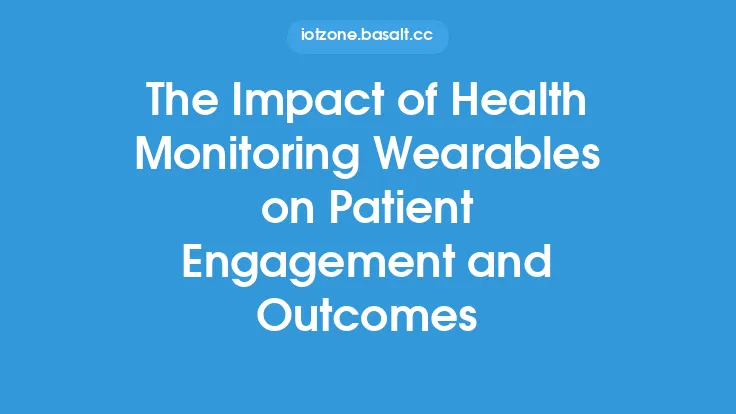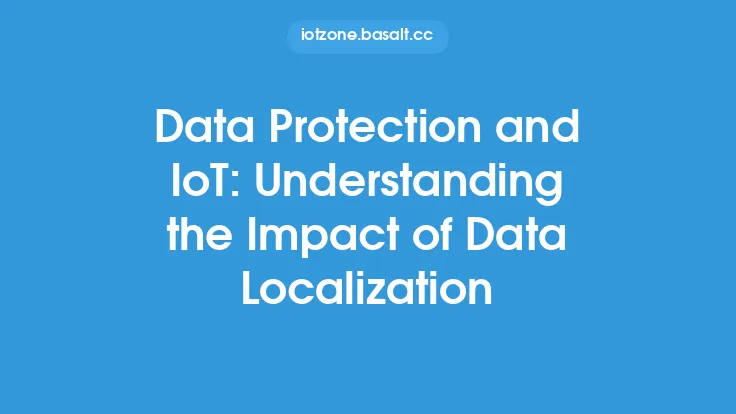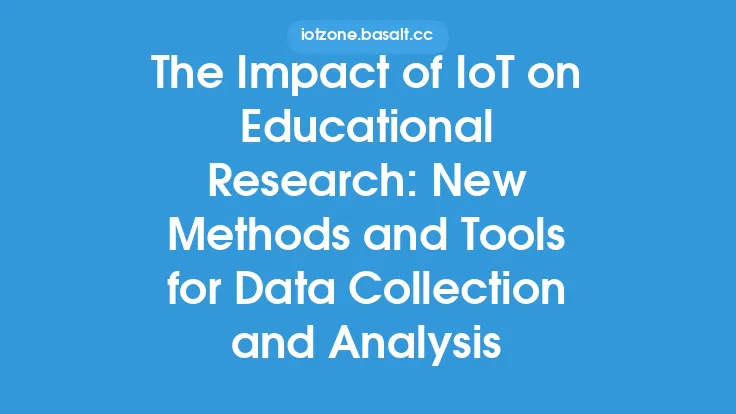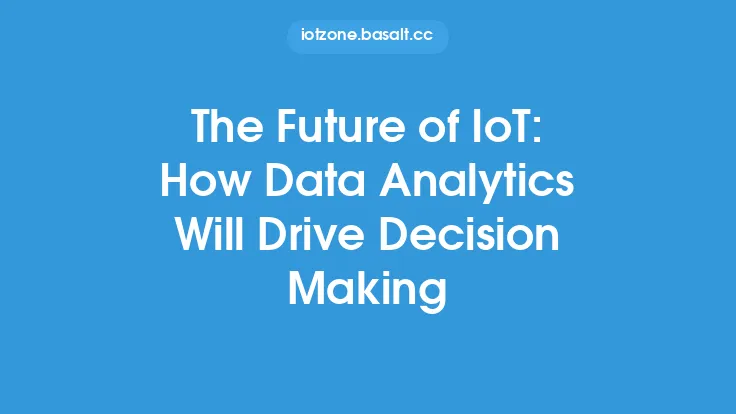The Internet of Things (IoT) has been transforming the healthcare industry in various ways, and one of the most significant impacts is on healthcare data analytics. The integration of IoT devices and sensors in healthcare has led to an explosion of data, which can be leveraged to improve patient outcomes, reduce costs, and enhance the overall quality of care. In this article, we will delve into the world of IoT in healthcare data analytics, exploring the benefits, challenges, and future directions of this rapidly evolving field.
Introduction to Healthcare Data Analytics
Healthcare data analytics refers to the process of analyzing and interpreting large datasets related to patient care, medical research, and healthcare operations. The goal of healthcare data analytics is to extract insights and patterns from data, which can inform decision-making, improve patient outcomes, and optimize healthcare resources. With the advent of IoT, healthcare data analytics has become more complex and nuanced, as it involves analyzing data from a wide range of sources, including medical devices, wearables, electronic health records (EHRs), and other IoT-enabled devices.
IoT Data Sources in Healthcare
IoT devices and sensors in healthcare generate vast amounts of data, which can be categorized into several types, including:
- Structured data: This type of data is highly organized and easily searchable, examples include EHRs, lab results, and medical imaging data.
- Unstructured data: This type of data is not easily searchable and includes sources such as doctor-patient conversations, medical notes, and social media posts.
- Semi-structured data: This type of data combines elements of structured and unstructured data, examples include XML files and JSON data.
IoT devices in healthcare can generate data from various sources, including:
- Medical devices: Such as pacemakers, insulin pumps, and dialysis machines.
- Wearables: Such as fitness trackers, smartwatches, and biosensors.
- Environmental sensors: Such as temperature, humidity, and air quality sensors.
- Mobile devices: Such as smartphones and tablets.
Benefits of IoT in Healthcare Data Analytics
The integration of IoT in healthcare data analytics offers several benefits, including:
- Improved patient outcomes: By analyzing data from IoT devices, healthcare providers can identify patterns and trends that can inform treatment decisions and improve patient outcomes.
- Enhanced patient engagement: IoT devices can enable patients to take a more active role in their care, by providing them with real-time data and insights about their health.
- Reduced costs: IoT data analytics can help healthcare providers optimize resources, reduce waste, and improve operational efficiency.
- Personalized medicine: IoT data analytics can enable healthcare providers to tailor treatment plans to individual patients, based on their unique characteristics, medical history, and lifestyle.
Challenges in IoT Healthcare Data Analytics
Despite the benefits of IoT in healthcare data analytics, there are several challenges that need to be addressed, including:
- Data quality and integrity: IoT devices can generate vast amounts of data, which can be noisy, incomplete, or inaccurate.
- Data security and privacy: IoT devices can be vulnerable to cyber threats, which can compromise patient data and undermine trust in the healthcare system.
- Interoperability: IoT devices from different manufacturers may not be able to communicate with each other, which can limit the ability to integrate data and gain insights.
- Scalability: IoT data analytics requires significant computational resources and infrastructure, which can be a challenge for healthcare organizations with limited resources.
Technical Requirements for IoT Healthcare Data Analytics
To analyze IoT data in healthcare, several technical requirements need to be met, including:
- Data processing and storage: IoT data analytics requires significant computational resources and storage capacity, which can be provided by cloud-based infrastructure or on-premise data centers.
- Data integration and interoperability: IoT devices from different manufacturers need to be able to communicate with each other, which requires standardized protocols and APIs.
- Machine learning and artificial intelligence: IoT data analytics requires advanced machine learning and artificial intelligence algorithms, which can identify patterns and trends in large datasets.
- Data visualization and reporting: IoT data analytics requires intuitive and user-friendly data visualization and reporting tools, which can help healthcare providers gain insights and make informed decisions.
Future Directions in IoT Healthcare Data Analytics
The future of IoT in healthcare data analytics is exciting and rapidly evolving, with several trends and innovations on the horizon, including:
- Edge computing: The ability to analyze data at the edge of the network, closer to the source of the data, which can reduce latency and improve real-time decision-making.
- 5G networks: The next generation of wireless networks, which can provide faster data transfer rates, lower latency, and greater connectivity.
- Artificial intelligence and machine learning: The use of advanced AI and ML algorithms, which can identify patterns and trends in large datasets and provide predictive insights.
- Blockchain and distributed ledger technology: The use of blockchain and distributed ledger technology, which can provide secure and transparent data storage and sharing.





